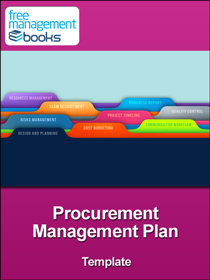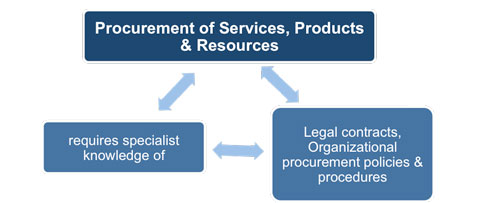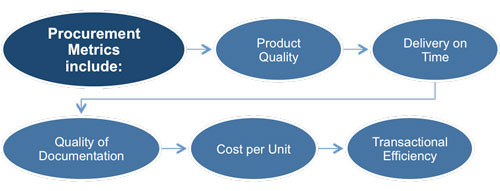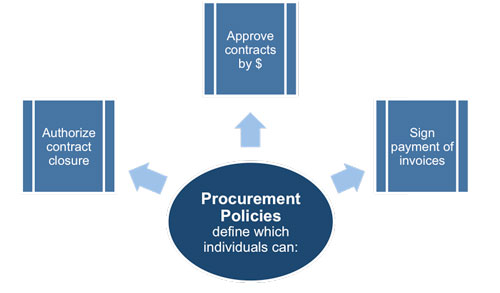
Procurement Management Plan Template
This procurement management plan template guides you through defining the framework that will be used throughout a project to procure the necessary resources.
This identifies the products, services and resources that need to be acquired or purchased from outside of the project team. It will include the timeframe for each resource and the quoting and management processes attached to this procurement.
Project Procurement Management Plan
The stages of how such tasks are performed is outlined in the procurement plan which becomes a component of the project plan. It describes how all of the other procurement management processes are to be carried out.
• What will be procured for the project
• Type of contract used
• How they will be selected & managed
• How their performance will be measured
• How procurement risk is to be managed.
With every aspect of a project has an element of risk and the procurement plan is no exception. It describes how risks are identified, assessed and managed within the constraints of the procurement processes. These risks will be include in the project risk register to ensure that all relevant threats are identified and documented in a central repository.

Deciding on the type of contract best suited to the project and its desired resources includes stating contract deliverables in precise terms and the metrics that will be used to measure contract performance and ensure it meets the needs of the project. It is common for a project to base their metrics on those of the organization’s purchasing and contract departments this will include the following. Each potential vendor or supplier is then ranked against metric on a 3-scale or 5-scale weighting system, whatever is the most appropriate for the project.
Project Procurement Management Metrics
An important part of procurement is the determination of cost levels incurred in each contract and the careful monitoring of contract fees to ensure the overall project budget is not exceeded. This template guides you through each stage of defining what items need to be procured, how these procurements will be performed, controlled and managed to their closure throughout the life of the project.
The procurement plan’s aim is define the exact requirements that must be procured outside of the project team and then outline how these contractual relationships will be managed from inception to the closure of the final contract. It is an area that uses a specific skill set and many project managers will bring in a contract specialist or ensure someone on the team has the contractual and legal knowledge to efficiently conduct the necessary procurements.

Project Procurement Management Policies
It also outlines who within the project organization has the authority to conduct and approve contracts plus the level of spend they are responsible for. The plan will list who within the team is allowed to sign off contracts, the contractual value they can authorize, their ability to sign-off third party invoices for payment and finally if they are responsible for contract closure.
The time allocated to planning and defining the procurement processes and management approach that a project manager adopts must make sure this aspect of the project runs smoothly and does not become an all consuming distraction. He or she will have several discussions with the appropriate stakeholders to ensure their support in procuring the services, resources and products needed for the project.

Project Procurement Personnel
The majority of project managers act as an ‘overseer’ for all procurement activities related to a their project and will work closely with the Project Management Office (PMO) to finalize the procurement list. This list will then be passed on the purchasing department who then determines the best way to acquire the resource and start the process of supplier selection and contract negotiation.
The procurement of all resources must correlate with the project schedule to ensure items are available as needed to complete the specified work packages. Every procurement involves an element of risk, whether this is inherent in the type of contract, historic relationship with the third party or the uncertainties of associated with the scope or schedule.
The key to success is to identify and plan to mitigate their occurrence or impact on the provision of the service. There are certain of risks that are directly related to the nature of procurement and how each will be addressed is described in this management plan. The sort of risks that are directly related to procurement include:
• Unrealistic schedule & cost expectations for vendors & suppliers
• Manufacturing capacity capabilities of vendors & suppliers
• Conflicts with current contracts and vendor/supplier relationships
• Configuration management for upgrades and improvements of purchased technology
• Potential delays in shipping and impacts on cost and schedule
• Questionable past performance for vendors & suppliers
• Potential that final product does not meet required specifications
Constraints are also part of any procurement and must be defined at the earliest opportunity so that they can be taken into consideration and communicated as part of this process. They occur in a wide variety of circumstances in particular third-party relationships, within the project scope, schedule, technology and in some instances costings. These issues will play a key role in deciding whether or not ‘items’ are made in-house or externally as shown in the diagram.
Project Procurement Management Make/Buy Decision
In many organizations contractual decisions are made by a ‘Contract Review Board’ (CRB) and the sort of criteria they will judge suppliers suitability on include:
• Past performance
• Quality of final deliverable
• Ability to meet required deadline date
• Outsourced Cost Vs. In-sourcing
The project manager will be part of the final decision to ensure that she or he has the resources they need, when they need them. This naturally includes who within the project team on a day-to-day basis will manage the supplier and all aspects relating to their delivery, ultimately responsible remains with the project manager.

Leave a Reply